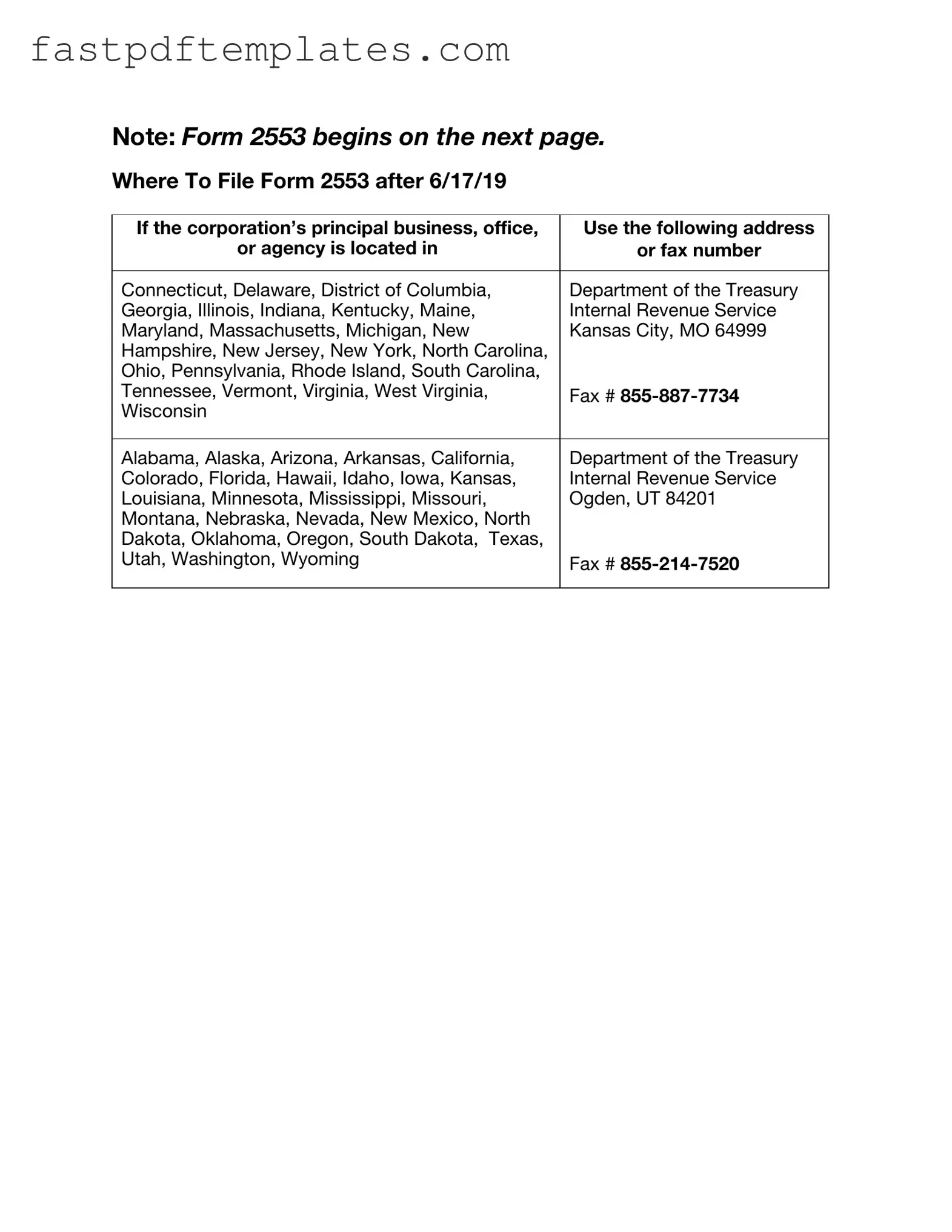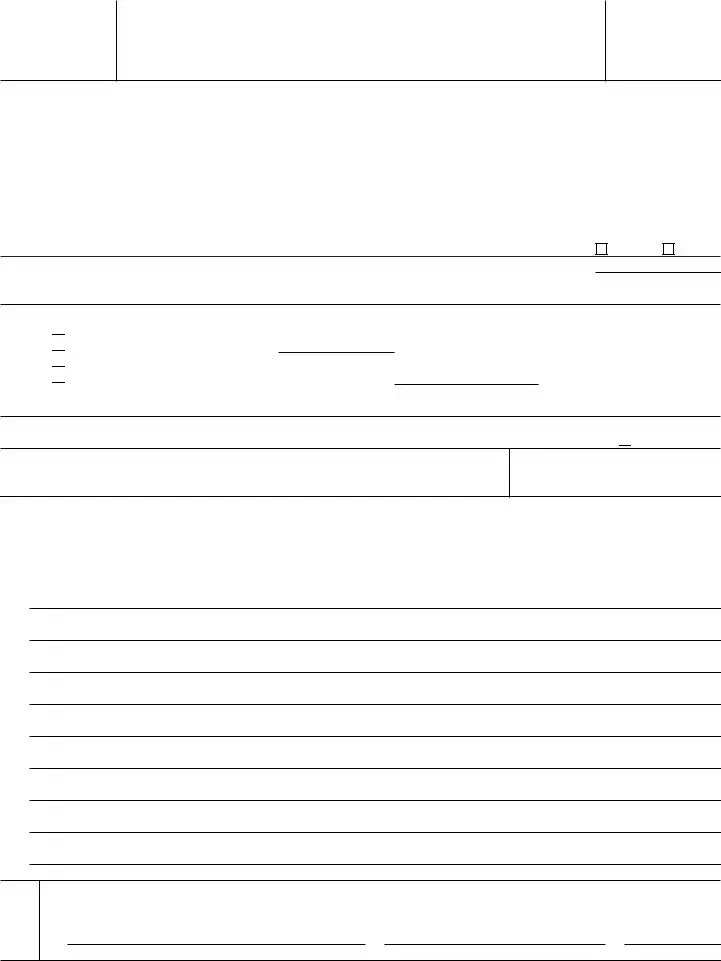The IRS Form 8832 is similar to Form 2553 in that both are used by entities to elect their tax classification. While Form 2553 is specifically for S Corporations, Form 8832 allows businesses to choose how they want to be classified for federal tax purposes, whether as a corporation, partnership, or sole proprietorship. This flexibility can significantly impact the tax obligations of a business, making the choice crucial for effective financial planning.
Form 1065, the U.S. Return of Partnership Income, is another document that shares similarities with Form 2553. While Form 2553 is used to elect S Corporation status, Form 1065 is filed by partnerships to report their income, deductions, and other important financial information. Both forms require detailed information about the entity’s structure and operations, reflecting the importance of accurate reporting for tax compliance.
The IRS Form 1120 is the U.S. Corporation Income Tax Return, which parallels Form 2553 in its focus on corporate tax obligations. Form 1120 is filed by C Corporations to report their income, gains, losses, and deductions. While Form 2553 is about electing S Corporation status, both forms are integral to understanding a corporation's tax responsibilities, albeit under different classifications.
Form 941, the Employer's Quarterly Federal Tax Return, also bears resemblance to Form 2553. Both forms are essential for businesses, particularly those with employees. Form 941 is used to report income taxes, Social Security tax, and Medicare tax withheld from employee paychecks, while Form 2553 is crucial for electing S Corporation status, which can affect how these taxes are calculated and reported.
The IRS Form 1065-B, the Return of Income for Electing Large Partnerships, is another document that shares similarities with Form 2553. Like Form 2553, which allows a corporation to elect S status, Form 1065-B is specifically designed for large partnerships that choose to be taxed under a special set of rules. Both forms require specific elections to be made for tax treatment, emphasizing the importance of entity classification.
Form 1120-S, the U.S. Income Tax Return for an S Corporation, is directly linked to Form 2553. Once a business elects S Corporation status using Form 2553, it must file Form 1120-S annually to report its income, deductions, and other tax-related information. This connection highlights the importance of Form 2553 in determining the tax obligations of S Corporations.
Form W-2, the Wage and Tax Statement, is another document that, while different in purpose, has a connection to Form 2553. Businesses that elect S Corporation status must issue Form W-2 to their employees to report wages and taxes withheld. Both forms play critical roles in ensuring accurate tax reporting and compliance for businesses with employees.
The IRS Form 1040, the U.S. Individual Income Tax Return, is also relevant in this context. While Form 2553 is focused on corporate elections, the individual tax return is where shareholders of S Corporations report their share of the corporation’s income. This relationship underscores the impact of Form 2553 on individual tax obligations for those involved in S Corporations.
Form 720, the Quarterly Federal Excise Tax Return, shares a thematic connection with Form 2553 in that both are used for tax reporting purposes. While Form 720 is specifically for reporting excise taxes, businesses that elect S Corporation status using Form 2553 must also ensure compliance with various tax obligations, including any applicable excise taxes.
Lastly, Form 8862, the Information to Claim Earned Income Credit After Disallowance, is relevant in the broader context of tax compliance. Although it serves a different purpose, it highlights the importance of accurate reporting and eligibility requirements, much like Form 2553 does for S Corporations. Both forms require careful attention to detail to ensure compliance with IRS regulations.


 Calendar year
Calendar year Fiscal year ending (month and day)
Fiscal year ending (month and day) 





 if the fiscal year entered in item F, Part I, is requested under the prior approval provisions of Rev. Proc.
if the fiscal year entered in item F, Part I, is requested under the prior approval provisions of Rev. Proc. 
 to show that the corporation intends to make a
to show that the corporation intends to make a 
 to show that the corporation agrees to adopt or change to a tax year ending December 31 if necessary for the IRS to accept this election for S corporation status in the event (1) the corporation’s business purpose request is not approved and the corporation makes a
to show that the corporation agrees to adopt or change to a tax year ending December 31 if necessary for the IRS to accept this election for S corporation status in the event (1) the corporation’s business purpose request is not approved and the corporation makes a 
 to show that the corporation will make, if qualified, a section 444 election to have the fiscal tax year shown in item F, Part I. To make the election, you must complete
to show that the corporation will make, if qualified, a section 444 election to have the fiscal tax year shown in item F, Part I. To make the election, you must complete 
 to show that the corporation agrees to adopt or change to a tax year ending December 31 if necessary for the IRS to accept this election for S corporation status in the event the corporation is ultimately not qualified to make a section 444 election.
to show that the corporation agrees to adopt or change to a tax year ending December 31 if necessary for the IRS to accept this election for S corporation status in the event the corporation is ultimately not qualified to make a section 444 election.